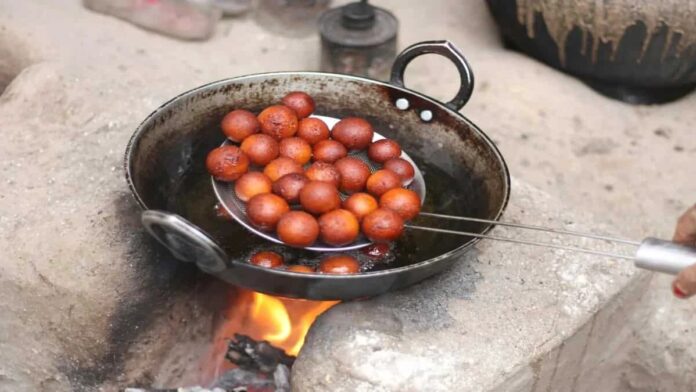The Mughal Emperors, who reigned over the Indian subcontinent from the early 16th to the mid-19th century, not only left an indelible mark on the region’s political landscape but also profoundly influenced its culinary traditions.
Their imperial courts were a crucible of refined tastes, blending Central Asian, Persian, and Indian flavours to create a unique and sophisticated cuisine that extended to the realm of sweets.
The royal kitchens, adorned with the finest chefs and culinary artisans, birthed a legacy of desserts that transcended mere gustatory pleasures, evolving into a symbol of opulence, grandeur, and cultural amalgamation. As the Mughal Empire flourished, so did the art of sweet-making. Here, are seven traditional sweet dishes that have been relished for ages.
Sahi Tukda
Sahi Tukda, a revered traditional sweet, has captivated taste buds since the Mughal era, showcasing the culinary richness of Indian heritage. Originally this dish is a reformed version of balai tukda and was emperor’s favourite dish to break their fast during the month of Ramadan. This delectable dessert consists of bread slices soaked in fragrant sugar syrup, adorned with rich cream, and sprinkled with pistachios and almonds. Originally crafted to please the royal palate, Sahi Tukda seamlessly blends sweet and aromatic flavors, echoing the opulence of Mughal culinary artistry. Its timeless popularity endures, inviting connoisseurs to savor a slice of history with each divine bite.
Sheer Khurma
Sheer Khurma, a timeless delight, traces its roots to the Mughal Emperor’s era, captivating taste buds across generations. Originated from Persia, through the famous Silk Route, this mouthwatering dish entered the Indian subcontinent This traditional sweet, meaning “milk with dates” in Persian, epitomizes culinary artistry. Prepared with vermicelli, milk, and an opulent blend of dry fruits, its rich history resonates in every decadent spoonful. A celebratory dish during Eid, Sheer Khurma transcends time, embodying the culinary legacy of the Mughals and offering a sweet journey through the annals of Indian history and culture.
Imarti
Imarti is also known as Jhangri, the later name is quite significant to the origin of the dish. Prince Salim or Jehangir was very fond of sweet dishes, thus, the Mughal cooks of the Fatehpur Sikhri came up with this dish. This traditional Indian sweet, reminiscent of a delicate web, is crafted from urad dal batter, deep-fried to a golden hue, and soaked in sugar syrup. Its sweet legacy continues, with each bite echoing the richness of history. Imarti’s popularity endures, a testament to its exquisite flavor and cultural significance, connecting modern connoisseurs to the sweet indulgences enjoyed by Mughal emperors and their courts.
Badam phirni
Badam Phirni, a luscious Indian dessert, has been a cherished delicacy since the Mughal Emperor Shah Jahan’s era. Crafted with aromatic basmati rice, fragrant cardamom, and rich almond paste, it embodies the royal culinary heritage. This traditional sweet captivates taste buds with its creamy texture and a symphony of flavours. Passed down through generations, Badam Phirni is a testament to the timeless allure of Mughlai cuisine, preserving the essence of history in every spoonful, making it a revered treat for festive occasions and celebrations.
Meetha seviyan
Meetha Seviyan, a cherished dessert rooted in cultural richness, has graced tables since the Mughal Emperor’s era, offering a sweet symphony of flavours sunset like colour to the celebration of Eid. Crafted with vermicelli, ghee, and condensed milk, it stands as a testament to culinary artistry passed down through generations. The delicate strands, soaked in sweet indulgence, encapsulate the essence of tradition. This timeless treat continues to evoke nostalgia, celebrating a heritage that transcends time and connects us to the opulence and elegance of Mughal culinary history.
Zarda
Originating from the imperial kitchens, this vibrant dessert reflects a perfect blend of fragrant basmati rice, aromatic saffron, and assorted nuts. This dish is also known as Meethe Chawal. Infused with centuries of culinary mastery, Zarda encapsulates the essence of Mughal richness and continues to enchant palates with its golden hues and sweet symphony of flavours. A cherished relic of the past, this dessert remains a delightful reminder of culinary opulence transcending through generations.
Gulab Jamun
Gulab Jamun, a cherished Indian dessert, has graced tables since the Mughal Emperor’s era, epitomising centuries of culinary artistry. These delectable, golden-brown spheres, made from khoya and drenched in sugar syrup, offer a taste of history and tradition. The Mughals, connoisseurs of fine cuisine, introduced this sweet, and its popularity endures as an iconic treat during festivals, celebrations, and joyous occasions. The renowned emperor Shah Jahan’s royal chef first came up with this amazing sweet dish. Gulab Jamun’s timeless appeal transcends generations, embodying the rich cultural tapestry of India with each syrupy, melt-in-the-mouth bite.


